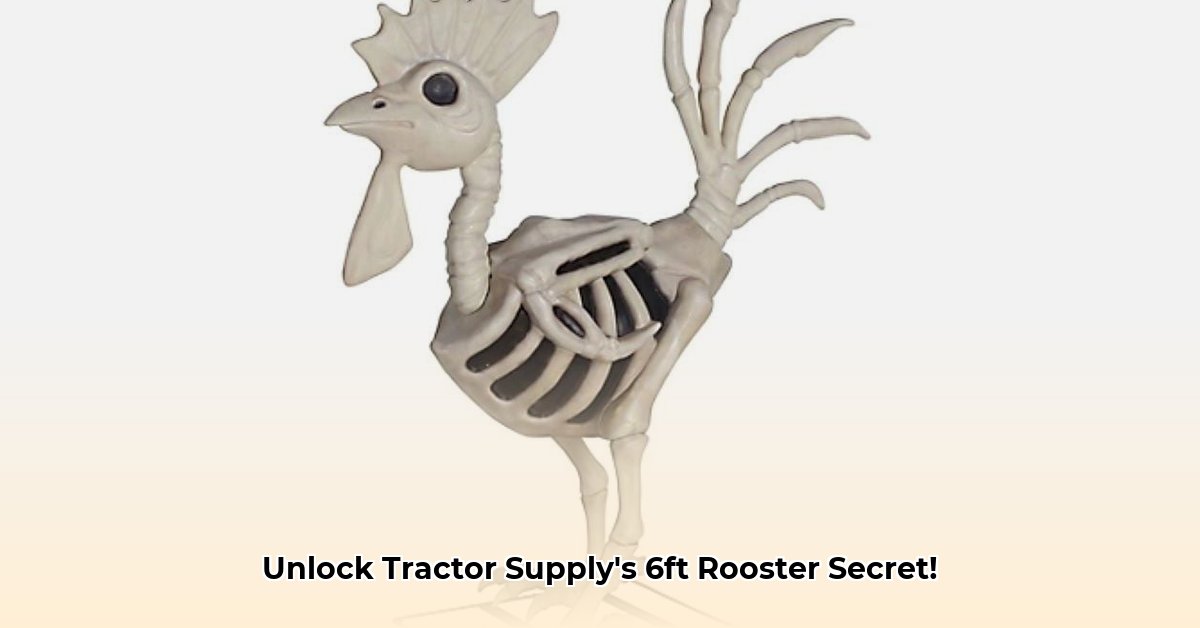
Understanding the "6 ft Rooster Tractor Supply" for Sustainable Poultry Farming
Let's clarify the term "6 ft rooster tractor supply." While not a standard industry term, we'll assume it refers to a mobile chicken coop, approximately six feet in length, designed for rotational grazing – a key element of sustainable poultry farming. This approach offers several advantages over traditional static coops. For more information on finding suitable coops, check out Tractor Supply Coops.
Rotational Grazing: A Sustainable Approach
Rotational grazing, using a mobile coop like our hypothetical "6 ft rooster tractor supply," mimics the natural foraging behavior of chickens. By moving the coop to a fresh area every few days, overgrazing is avoided, and the land has time to recover. This method promotes healthier soil, reduces parasite loads, and provides chickens with fresh, nutrient-rich forage. Is this sustainable practice right for you? Let's find out.
How to Implement Rotational Grazing with Your Mobile Coop
Setting up rotational grazing is straightforward, requiring planning and consistency:
- Divide your land: Section your pasture into smaller areas to allow for rest and recovery between chicken rotations.
- Prepare each section: Clear the area of debris and potential hazards before introducing your chickens.
- Move the coop regularly: Relocate the 6 ft coop to a fresh section every 3-5 days (adjust based on flock size and pasture regrowth). This ensures your chickens always have access to fresh forage and a clean environment.
- Clean up after each rotation: Remove chicken droppings to prevent disease buildup and allow natural soil fertilization.
- Monitor and adjust: Observe your chickens' foraging behavior and adjust the rotation schedule as needed.
This systematic approach makes rotational grazing manageable and highly effective.
Benefits of Rotational Grazing with a Mobile Coop
Adopting a rotational grazing system provides multiple benefits:
- Improved pasture health: Reduced soil compaction and erosion lead to healthier land.
- Natural fertilization: Chicken manure acts as a natural fertilizer, reducing the need for chemical alternatives.
- Decreased parasite infestation: Moving the coop minimizes parasite buildup, leading to healthier chickens.
- Enhanced chicken welfare: Chickens experience improved access to fresh food and a cleaner environment, contributing to overall happiness and health.
- Environmental sustainability: Rotational grazing significantly reduces the environmental impact of conventional poultry farming practices.
These combined benefits make this approach more sustainable and economically viable in the long run.
Challenges and Considerations
While the benefits are clear, some challenges exist:
- Initial investment: Building or purchasing a mobile coop represents a larger upfront cost than a traditional static coop.
- Maintenance: Regular cleaning and coop maintenance are necessary to ensure animal and environmental health.
- Predator control: Protecting your flock from predators requires thoughtful planning and security measures.
- Land requirements: Sufficient land is necessary to implement an effective rotational grazing system.
Careful consideration of these factors is vital before adopting this system.
Rotational Grazing vs. Traditional Static Coops: A Comparison
Here's a concise comparison to aid your decision-making:
| Feature | Traditional Static Coop | Rotational Grazing (6 ft Coop) |
|---|---|---|
| Pasture Health | Poor, prone to overgrazing | Excellent, promotes soil health |
| Parasite Control | High risk of buildup | Significantly reduced |
| Labor Requirements | Moderate | Moderate, with coop relocation |
| Initial Investment | Low | Higher |
| Environmental Impact | Higher | Lower |
The choice depends on your specific needs, resource availability, and farming scale.
Conclusion: Embracing Sustainable Practices
The hypothetical "6 ft rooster tractor supply" represents a pathway to sustainable poultry farming. While requiring upfront investment and consistent management, rotational grazing offers significant long-term advantages for both your chickens and the environment. By embracing this innovative approach, you contribute to a healthier planet and more ethical animal husbandry.